Mahe Travel Guide
Despite its high population density and development level, the island of Mahe, the largest of the Seychelles archipelago, contains plenty of hidden treasures, not least of which is a legendary pirate's cache purportedly buried at Bel Ombre. The southern end of the island still sports deserted beaches, and even the busy northern urban enclave, which includes the international airport and capital city, Victoria, exudes laid-back charm.
The spine of the island is a spectacular mountain range that includes Morne Seychellois, the island's highest peak. Around the peak is one of the island's beautiful national parks, offering great hiking and stunning scenery. More than 60 idyllic beaches fringed with swaying palm trees can be found along the shoreline, offering a host of activities including diving and various other watersports. There are several interesting sights on the island, particularly in friendly Victoria.
Although not renowned for its nightlife, Mahe is the liveliest island after dark and resorts such as the Berjaya Beau Vallon Bay Beach Resort and Casino, and several nightclubs and restaurants serve up traditional Creole delights and provide some evening entertainment.
Things to do in Mahe
Mahe is the largest and most developed island in the Seychelles, and home to the capital city, Victoria, and about 90 percent of the country's population. There is still plenty of unspoilt island paradise to go around though, and Mahe provides a good balance between luxury amenities and natural beauty. The interior is mountainous and densely jungled, much of it protected within the boundaries of the Morne Seychellois National Park. The gorgeous coastline is ringed by many pristine dive sites, with the celebrated St Anne Marine National Park within easy reach. Beau Vallon, on the northwest coast, is a tourist magnet, and the beaches of Anse Intendance and Baie Lazare are some of Mahe's most lovely.
Victoria is the only seaport in the Seychelles, and this tropical city retains some colonial flavour and boasts a few tourist attractions, including the Seychelles National Botanical Gardens, some historical buildings around Freedom Square, the Seychelles National Museum of History, and St Paul's Cathedral. The Sir Selwyn Clarke Market is a good stop for local produce and crafty souvenirs, and the George Camille Gallery is a treasure trove for admirers of the local artist.
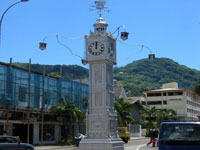
Victoria
Billed as the smallest capital city in the world, Victoria may also be considered one of the most charming and is easily explored on foot. The best place to soak up the friendly atmosphere is at the busy daily market (closed on Sundays), where local crafts are sold alongside fresh fish, fruit and vegetables.The city's French and British colonial history is still palpable, reflected in historical buildings such as the courthouse and main post office. Among the colourful houses, visitors can also spot a cathedral and the Victoria clock tower (a replica of the clock was first erected at Vauxhall Bridge in London in 1892). The quaint city is also home to many artists, and works by talented locals are popular buys at local galleries.
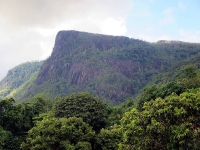
Morne Seychellois National Park
The largest national park in the Seychelles, Morne Seychellois National Park takes up almost 20 percent of the area of Mahe. The park is made up of a number of habitats and ecosystems ranging from coastal mangrove forests to misty mountain peaks. Morne Seychellois contains no settlements, although visitors may stumble across the ruins of old cinnamon distilleries. Dominating the landscape is Morne Seychellois, the highest peak on the island, at 2,970 feet (905m). The national park has a network of 12 well-marked hiking trails covering just over nine miles (15km), traversing some truly beautiful landscapes. Visitors can find maps and other information in Victoria.
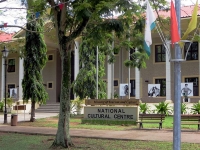
Seychelles National Museum of History
Travellers can step back into the days of the buccaneers at the Seychelles National Museum of History, which features excellent displays of historic artefacts relating to the cultural and natural history of the islands. Exhibits take visitors on a journey through three centuries of Seychelles history, and include a range of interesting displays that cover Creole culture, music, clothing, fishing and architecture. Though small, the museum holds fascinating items such as the Portuguese Nautical Atlas of the Indian Ocean in 1519 and the world's smallest statue of Queen Victoria.
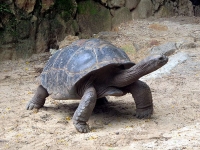
National Botanical Gardens
The century-old, six hectare Botanical Gardens at the south end of Victoria provide a cool, green oasis in the city, and are planted with a wide variety of indigenous and exotic trees, including the Seychelles islands' unique 'coco de mer' palms. For those staying on the island of Mahe and not travelling much further afield, the botanical garden may present the only opportunity to see this highly unusual plant, which is found nowhere else in the world. The orchid garden is also particularly lovely. Visitors can stop at the restaurant situated in the gardens for a bite to eat after a day of admiring the blooms.
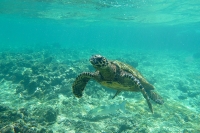
St Anne Marine National Park
Nature lovers will relish a guided tour from Victoria harbour to the magnificent St Anne National Marine Park, which covers six islands off the coast of Mahe. The islands included in the park are Ste Anne, Ile Moyenne, Ile Ronde, Ile Longue, Ile Cachee and Ile aux Cerfs. The park encompasses one of the most important nesting sites for hawksbill turtles, and beneath its clear waters the glory of the coral reefs awaits snorkellers and divers. Glass-bottomed boat trips and sunset cruises are also available, and the national park is a beautiful and popular spot for wedding photos. All Marine National Parks in Seychelles are open daily, including public holidays.
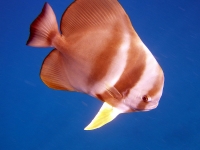
Dive Sites
With crystal clear waters and wonderful underwater reefs, wrecks, boulders and sea life, it is no surprise that one of the main activities in the Seychelles is exploring its underwater world. The islands have a selection of dive sites ranging from those suitable for snorkellers and novice divers, to those preferred by experienced scuba enthusiasts. Highlights include the wreck of the Royal Navy tanker Ennerdale, the grey reef sharks off Marianne Island and the spectacular coral life around The Sisters, Trompeuse and the Outer Islands.
There are dive operators on most of the islands, although many divers believe that the best way to explore the islands is aboard a charter boat. Diving is possible throughout the year, but the best times are March to May and September to November, when the prevailing winds are at their mildest and visibility is at its best. Visibility is generally more than 100 feet (30m), and water temperatures are often as high as 80F (29C), which are idyllic diving conditions. Divers can expect to see whale sharks, granite formations, soft and hard corals, turtles and giant stingrays, to name just a few highlights. Diving or learning to dive is the perfect holiday activity in the gorgeous Seychelles.
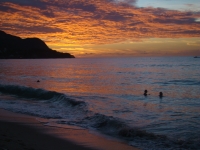
Beau Vallon Bay
Surrounded by lush tropical vegetation and turquoise waters, beautiful Beau Vallon Bay on the northern coast of Mahe Island is the most popular beach resort area in the Seychelles, and boasts several hotels, a casino and a selection of scuba-diving and water-sport centres. Known for its clear seas and enviable visibility, Beau Vallon also has a number of dive sites within the bay, including wrecks and several coral reefs. The Marine Park of Baie Ternay is easily accessible from Beau Vallon, and the bay is home to several major hotels, some of which are the oldest and most famous on the island. Le Meridien Fisherman's Cove, the Berjaya Beau Vallon and the Coral Strand are all excellent choices.
Mahe Climate and Weather
Mahe lies close to the equator, and the annual temperatures remain fairly constant, with average daytime temperatures at about 80F (27C). At higher altitudes, temperatures are lower, especially at nighttime. Mahe's dry season technically runs from May to October but travellers should note that during this period the southeast monsoon winds can bring brief showers every few days; these rain showers provide some relief from the heat and generally don't dampen the holiday spirit in any way. From December to March, the monsoon arrives bringing heavy rainfall and high humidity, especially in the coastal regions.
Mahe can be enjoyed at any time of year, but visitors do tend to avoid the monsoon rains between December and March. The best time to visit depends on desired activities.
Seychelles travel info
Electricity
Electrical current is 220-240 volts, 50Hz. Plugs are of the British type, with three flat pins.
Language
Creole, English and French are all spoken in the Seychelles.
Money
The Seychelles currency is the rupee (SCR), which is divided into 100 cents. It's uncommon to buy goods or pay for services in any other currency, though some guesthouses and hotels may accept euros or US dollars. Credit cards are widely welcomed throughout the Seychelles, and ATMs are available at major banks in Victoria and Praslin. Money can be exchanged at travel agents, banks and bureau de changes.
Tipping
Tipping generally isn't practiced and is never expected in the Seychelles, though top-end hotels or restaurants will sometimes add a service charge of 10 to 15 percent to the bill.
Health
Health regulations in the Seychelles require that travellers who arrive from or have transited through areas where there is a risk of yellow fever transmission have a vaccination certificate. All eligible travellers should be up to date with their COVID-19 vaccines; immunisation against hepatitis A, hepatitis B and typhoid are recommended. Visitors are advised to bring their own medication to avert the risk of travellers' diarrhoea, as well as sun block and insect repellent, as local supplies can be erratic and costly. During the rainy season in particular, visitors should take precautions against mosquito bites due to the risk of dengue fever and the chikungunya virus (although these diseases are rare in Seychelles). Tap water meets WHO standards, but most visitors prefer to drink bottled water, which is widely available. Medical facilities on the more remote islands are limited or non-existent, but visitors will find a government hospital and several private clinics in Victoria. Medical insurance with full evacuation cover is necessary.
Safety
Safety is not generally an issue in the Seychelles; violent crime is unlikely and most visits are trouble free. There have been some incidents of theft and assault, but these are targeted mainly at residents. Visitors should be vigilant, particularly after dark in Victoria and in isolated areas, and should avoid taking valuables to the beach, where petty thieves might snatch them. Women should avoid walking alone on isolated beaches.
Local customs
Seychellois are usually described as laid-back and easygoing, and dress codes around the destination are generally relaxed. Nudism is unacceptable, however, and topless bathing is tolerated on very few beaches. Punishments for drug offences can be severe.
Doing business
In the Seychelles, business is conducted relatively informally. Men and women are not required to wear formal suits, although a smart appearance is advised. Business is usually conducted in English or French. Business hours are generally 8am to 4pm Monday to Friday.
Duty free
Travellers to the Seychelles over 18 years do not have to pay duty on 200 cigarettes, or 250g of tobacco; two litres of spirits and two litres of wine; 200ml of perfume or eau de toilette. Prohibited items include drugs, narcotics, firearms, spear-fishing equipment, and camouflage clothing.
Communications
The international dialling code for Seychelles is +248. The outgoing code is 00 followed by the relevant country code (e.g. 0044 for the United Kingdom). Visitors can purchase local SIM cards for their mobile phones and many midrange and all top-end hotels offer WiFi, as do some cafes and restaurants.
Passport & Visa
No foreigners require a visa to enter Seychelles. A visitor's permit, valid for a maximum of three month, is issued on arrival and may be extended on application for up to three months. All visitors do, however, require a passport valid for the duration of their visit, a return or onward ticket, sufficient funds to cover their stay (a minimum of USD 150 per day), and proof of accommodation. Extensions are possible if applied for at least a week before expiry of visitor's permit. It is highly recommended that travellers' passports have at least six months' validity remaining after the intended date of departure from their travel destination. Immigration officials often apply different rules to those stated by travel agents and official sources.
Entry requirements
United States citizens require a passport valid for at least the length of their stay and will be issued with a visitor's permit on arrival, valid for three months. A visa is required.
British citizens need a passport valid for the duration of their stay, and will be issued with a visitor's permit on arrival, valid for three months. A visa is required.
Canadians require a passport valid for at least the length of their stay and will be issued with a visitor's permit on arrival, valid for three months. A visa is required.
Australians need a passport valid for the length of their stay and will be issued with a visitor's permit on arrival, valid for three months. A visa is required.
South Africans must have a passport valid for the duration of their stay and will be issued with a visitor's permit on arrival, valid for three months. A visa is required.
Irish citizens require a passport valid for the length of their stay and will be issued with a visitor's permit on arrival, valid for three months. A visa is required.
New Zealand citizens require a passport valid for the length of their stay and will be issued with a visitor's permit on arrival, valid for three months. A visa is required.
Useful contacts
Seychelles Tourist Office, Mahe: www.seychelles.travel/en/
999 (police and rescue services); 151 (medical emergency).Embassies / consulates in other countries
Seychelles Embassy, New York, United States: +1 212 972 1785.
Seychelles High Commission in London, United Kingdom: +44 20 7245 0680.
Seychelles Consulate, Montreal, Canada: +1 514 284 9329
Consulate General of the Republic of Seychelles, Melbourne, Australia: +61 (3) 9796 9412.
Seychelles Consulate, Pretoria, South Africa: +27 12 348 0270.
Consulate of the Republic of Seychelles, Dublin, Ireland: +353 87 66 22 675
Embassies / consulates in Seychelles
United States Consulate, Port Louis, Mauritius (also responsible for Seychelles): +230 202 4400.
British High Commission, Victoria: +248 428 3666.
Canadian High Commission, Port Louis, Mauritius (also responsible for Seychelles): +230 202 0160.
Australian High Commission, Port Louis, Mauritius (also responsible for Seychelles): +230 202 0160.
South African Commission, Port Louis, Mauritius (also responsible for Seychelles): +230 212 6925.



